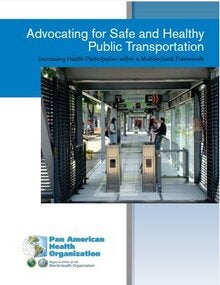Introduction: Transportation and human mobility are fundamental aspects of society. Efficient and healthy transportation systems that consider the wellbeing of populations are a desired and needed goal. A healthy and safe transportation system is one that is based on a legal framework which incorporates multisectoral work for its planning, design, and development; addresses equity at the population level; is affordable, reliable, and efficient; and has a low impact on the physical environment while providing safety to its users. There are multiple concrete elements that comprise a transportation system. These include its physical infrastructure, the modes of transportation used, and the types of users. Each of these elements determines how the system functions. This document highlights general health consequences that are linked to transportation modes and focuses on the benefits of efficient and safe public transportation within an overall transportation system. At the same time, it urges health professionals to become involved in multisectoral teams and provide critical input and expertise that can lead to the development of more adequate and effective transportation systems. The development, management, and sustainability of transportation systems should not only respond to economic targets and/or interests, but also reflect at their core a key understanding of the health implications these systems carry for individuals and communities alike. Structural designs should be based on concepts that reflect a clear understanding of how human health is affected by transportation, and they should foster healthy human behaviors and exposures rather than hinder them. Public transportation is presented within this context as an economically desirable alternative which, if integrated appropriately within the overall community transportation structure, has the potential to decrease social inequalities, improve the efficiency and reliability of human mobility, protect and even improve the physical environment, accommodate and compensate for human vulnerabilities and fallibility, and provide safety to its users
|

